(Psalterium, dit Psautier de Blanche de Castille)
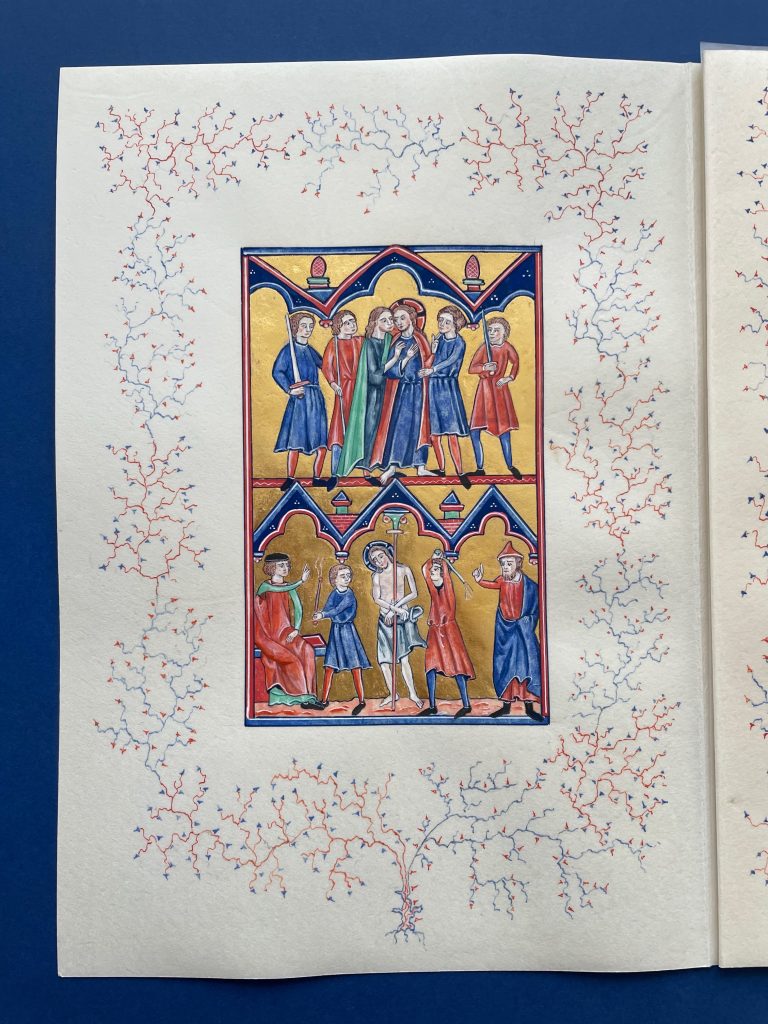
I had long wanted to make my own book, write and illustrate it myself, but it never really came about. After all, making a book yourself is a very comprehensive and time-consuming task. On top of that, I am not really a calligrapher and then writing a book myself?
The reason it came about anyway lay in my participation in the so-called: Scriptorium Project in 2018 initiated by the Protestant University in Amsterdam. (PThU). The aim of this project was to connect scholars and craftspeople around the production of (religious) books. A connection that should create a mutual depth. Initially, this project seemed promising but unfortunately, due to various reasons, it foundered. In particular, the students’ densely packed curriculum was a reason that hindered a real connection and made the support base too small.
Nevertheless, this period has been a very exciting and fruitful one for me, and it is because it was in that context that the idea of making a book myself was born. To be written, illuminated and bound.

Have ended up making a Psalter, a book of Psalms. The Psalms I have been familiar with since childhood are still, in fact increasingly dear to me and a source of reflection and hope. Also very important, of course, was that in the Middle Ages the Psalter was a very important book in the liturgy of the Church and likewise in that of the monasteries where the Psalms, during the various tides, were sung.
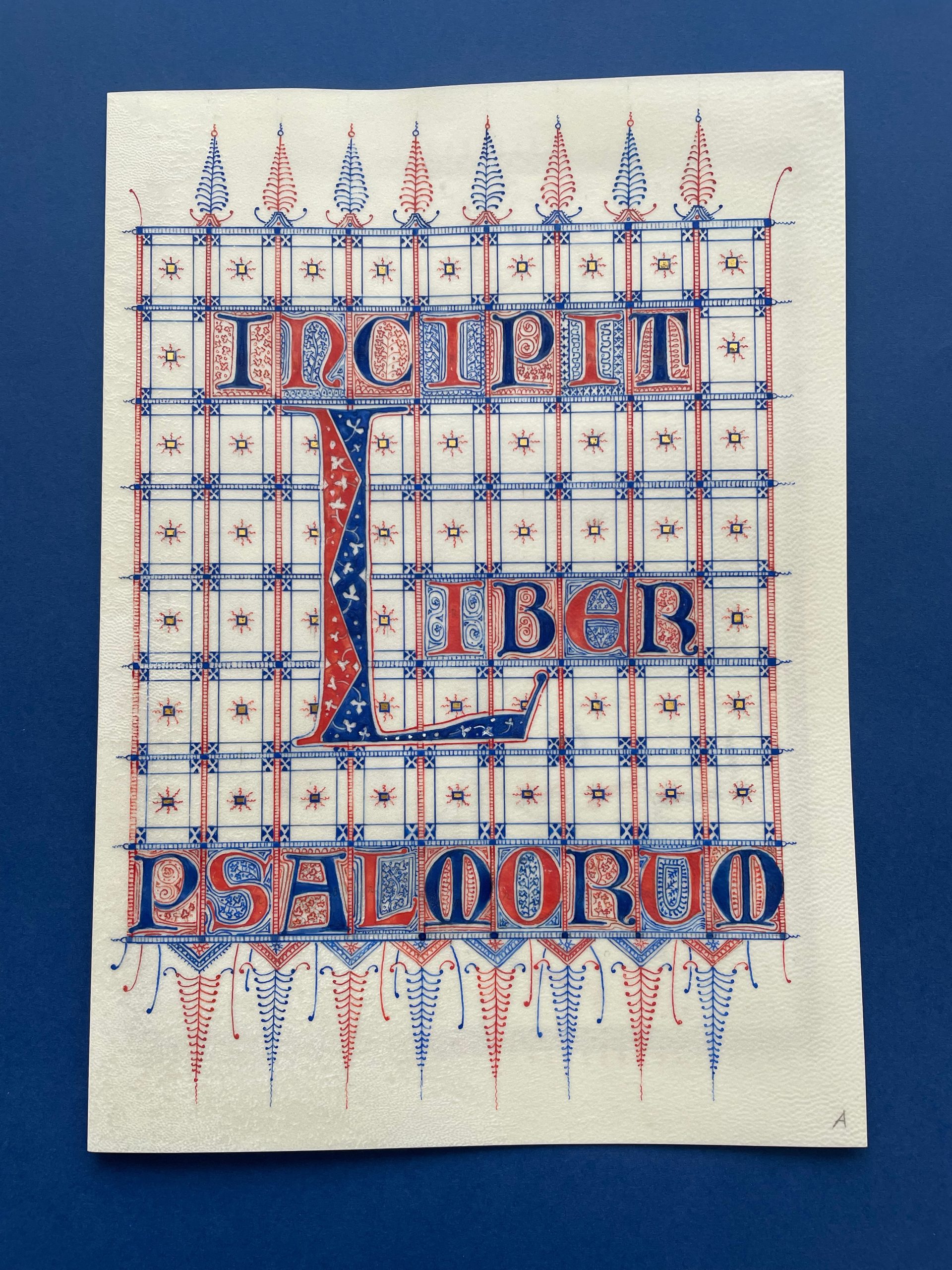
But how do you do something like that?
Although the Book of Psalms consists of 150 psalms, I have chosen the first 41 psalms. This does justice to the traditional division of the entire book of psalms into five books.The first book then contains psalm 1-41. So I did not do the other four books because of the sheer size of the work. een aantal keuzes vooraf gemaakt die bepalend waren voor de uitkomst en de vormgeving.
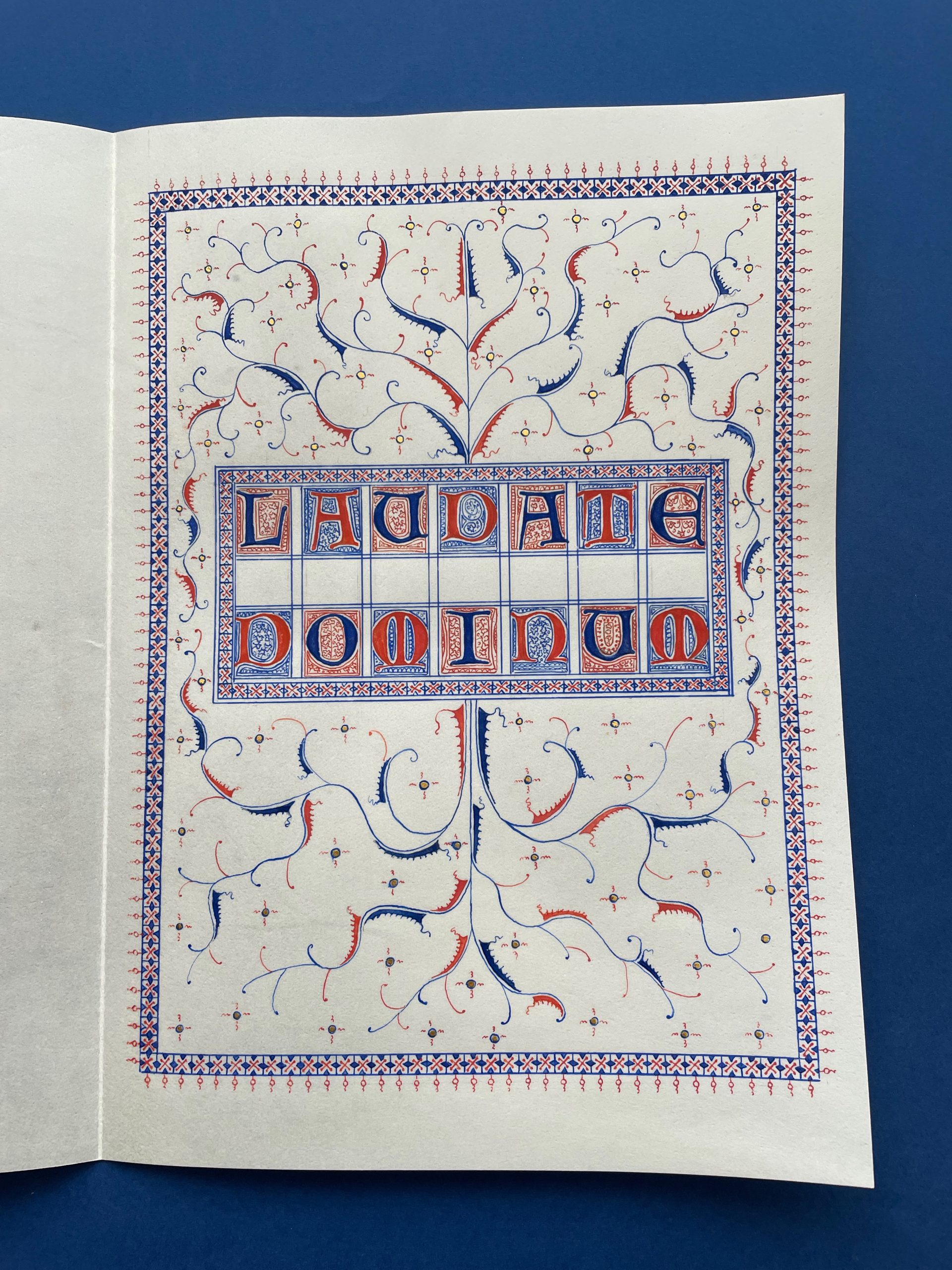
What materials will you use?
For my project, I tried to use as many traditional materials as possible. This resulted in the choice of parchment as the support for the text. I made the ink myself based on gallnuts and iron sulphate. For the colours, I used azurite, malachite, lapis- lazuli, cinnabar, (vermillion), among others.


The parchment on which was written came from the goat. The whole skin was first cut to size and folded into quires. Then the parchment was sanded with pumice powder mixed with lime. The surface of the parchment then took on a velvety character on which both ink and pigments got a good grip. In the places where writing was done, I also used Sandarac powder.
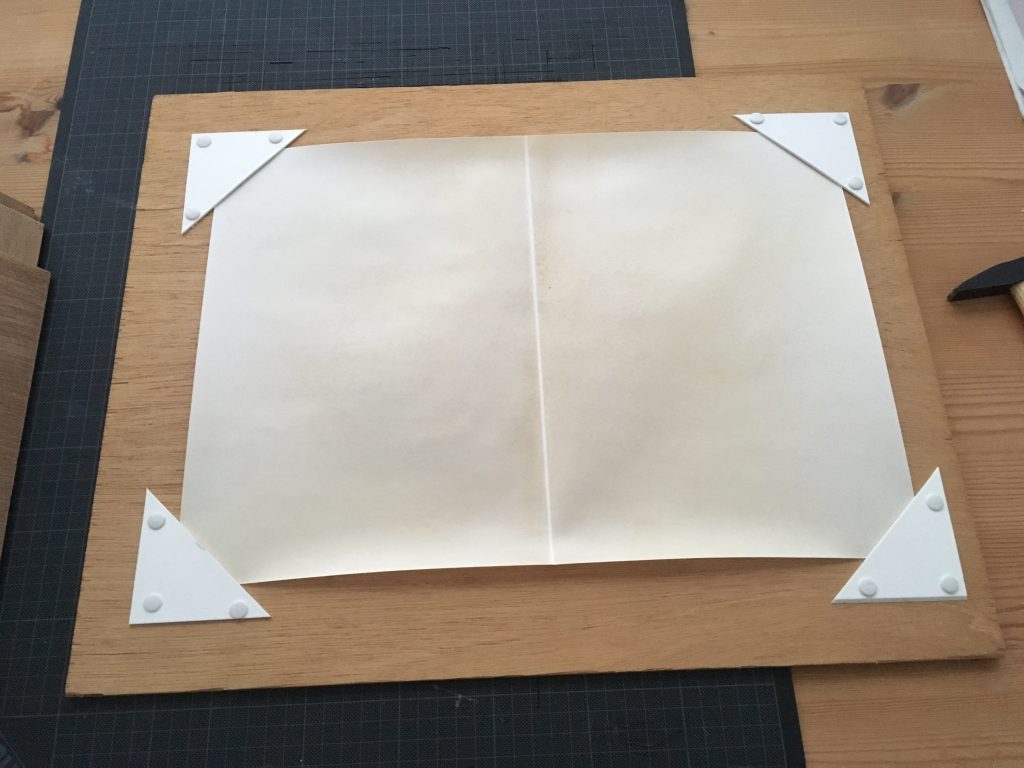
Which script will we use?
While working on this Psalter, I used the text from a medieval psalter kept in the Biblitothèque Nationale de France in Paris.(Arsenal). This is a psalm book made for Blanche de Castille from the 13th century. The special thing about this ‘Psautier’ is that it is illuminated, decorated with the so-called: ‘penwork’. These are decorations that are not painted but made with pen and ink. This Psalter was the stylistic starting point for me and guiding the character of the decoration. It is true that I tried to bring my own expression to the decoration.
As for the script: an early Gothic script.


At the beginning of a Psalter, we usually find a calendar with the holy days and Christian feasts. But we also find depictions from the Old and New Testaments. In my Psalter, I made some replicas of those representations but designed the penwork in the margins myself, just like on the notebook pages.
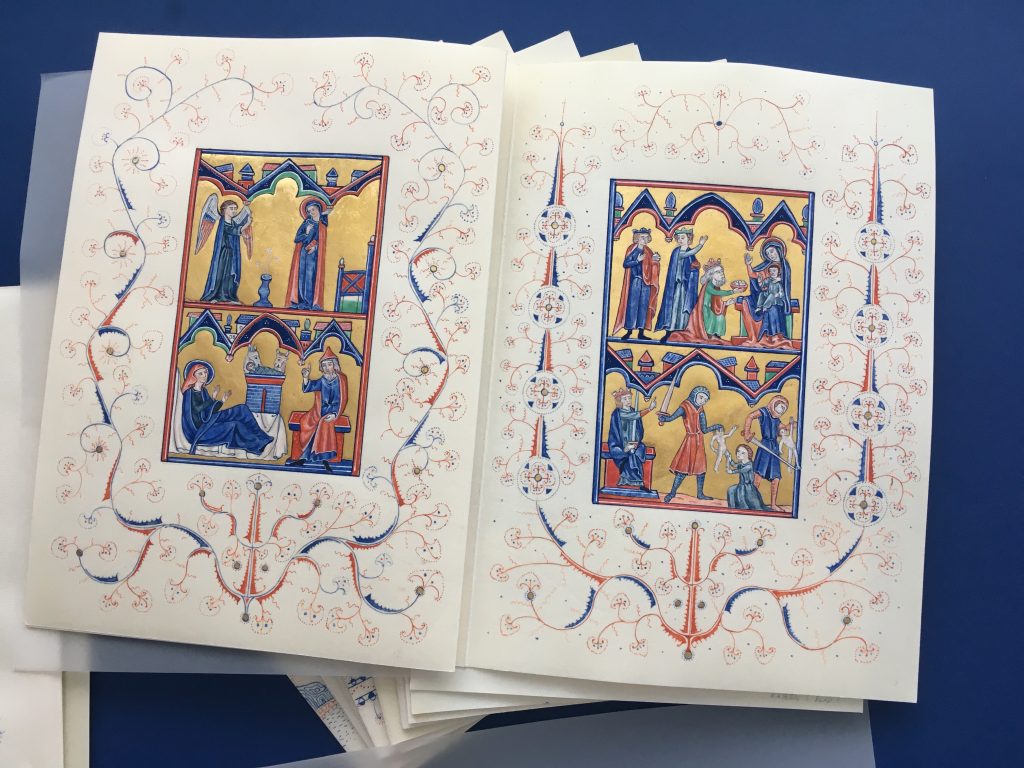
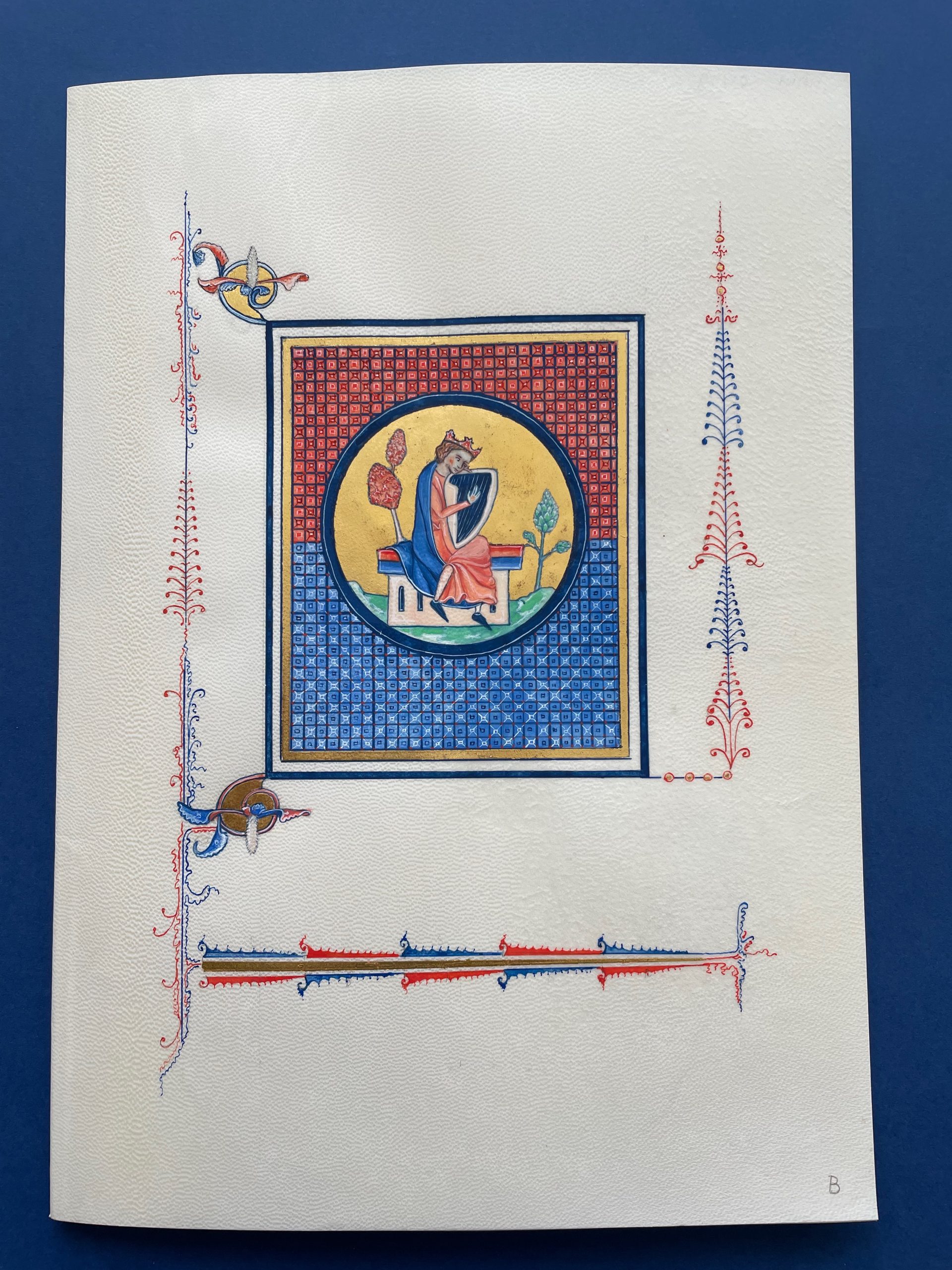
King David is considered the composer of many psalms. We therefore regularly encounter him in the performances.
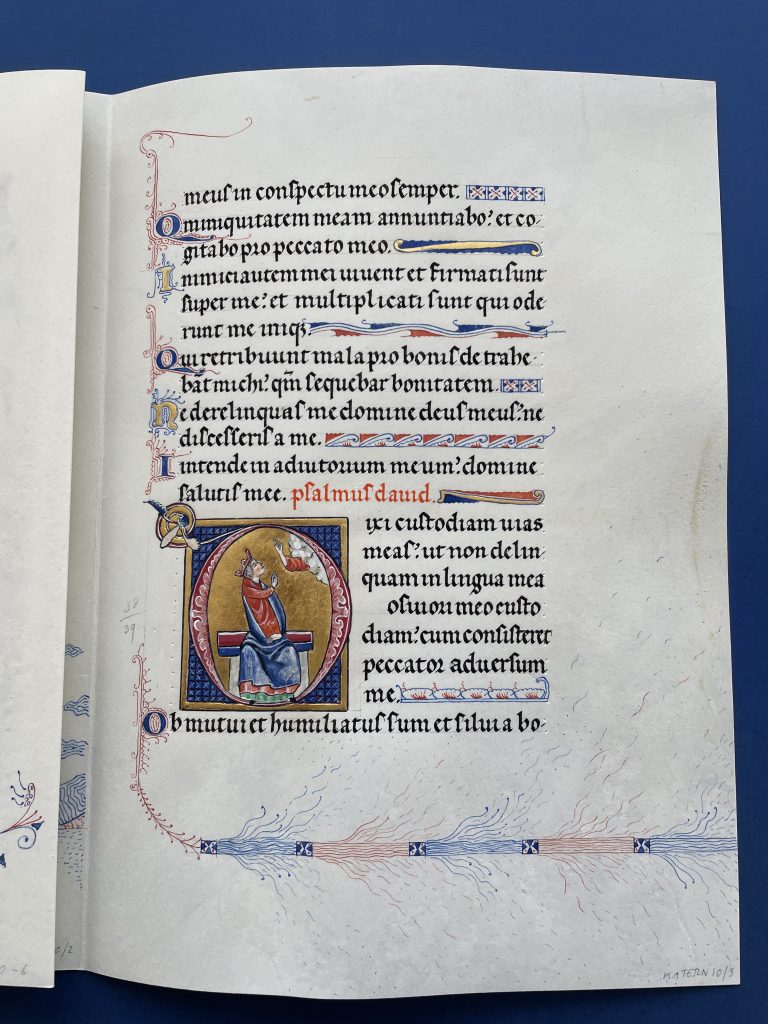
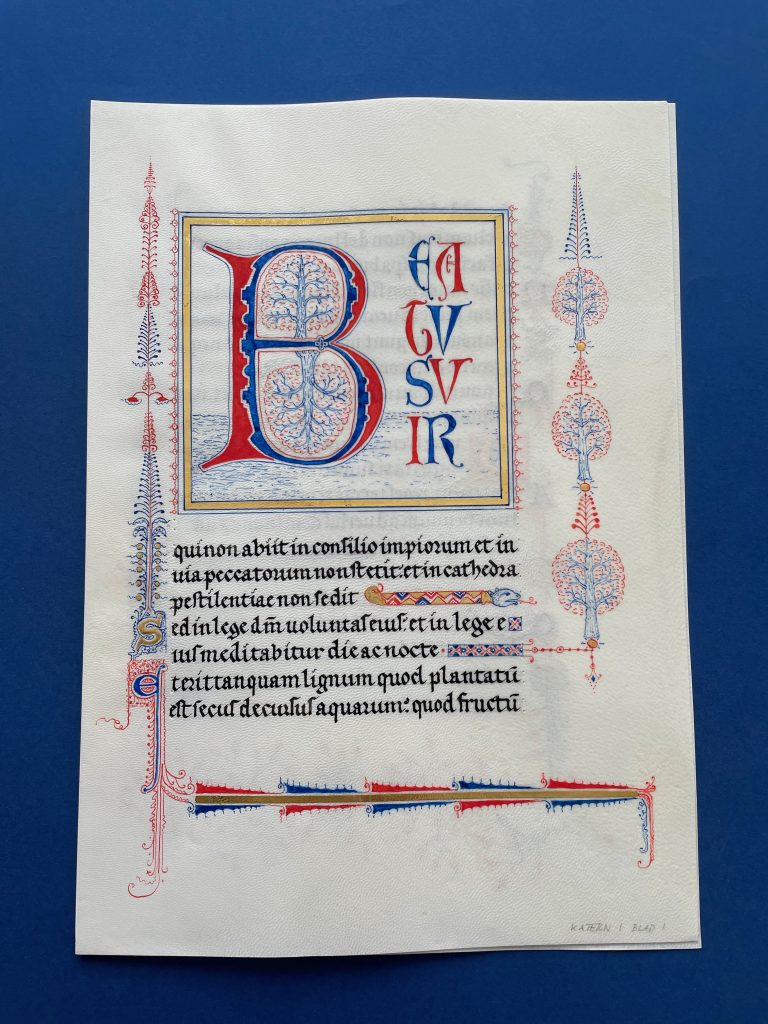
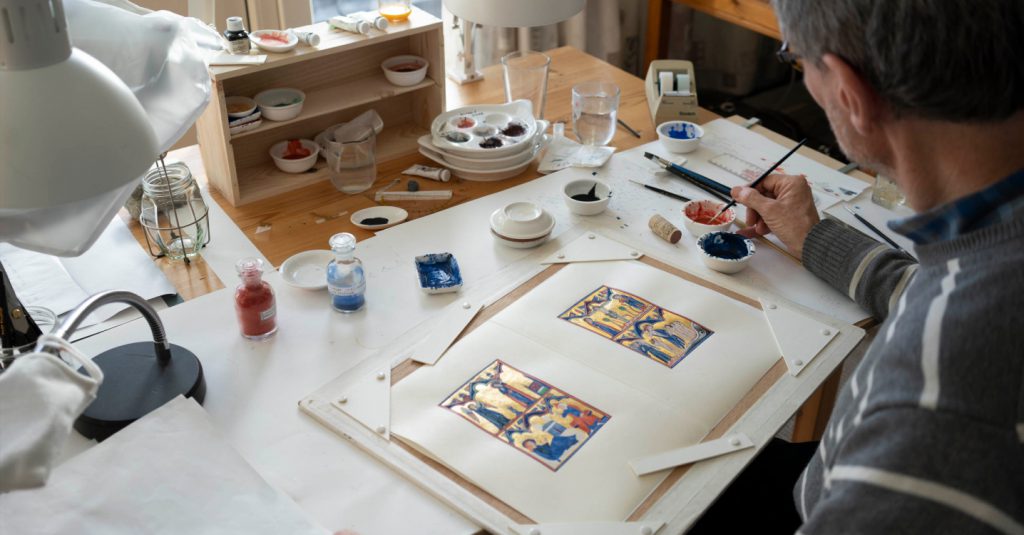
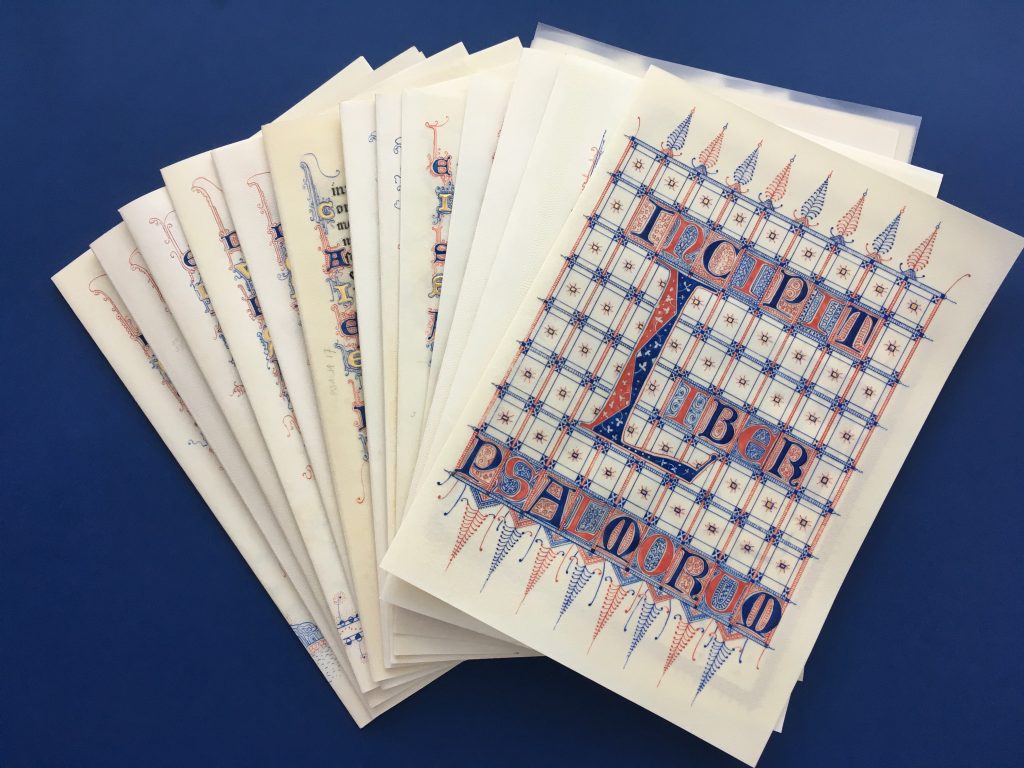
Loose described and decorated quires ready for binding.

Here the real Psalter that inspired me.